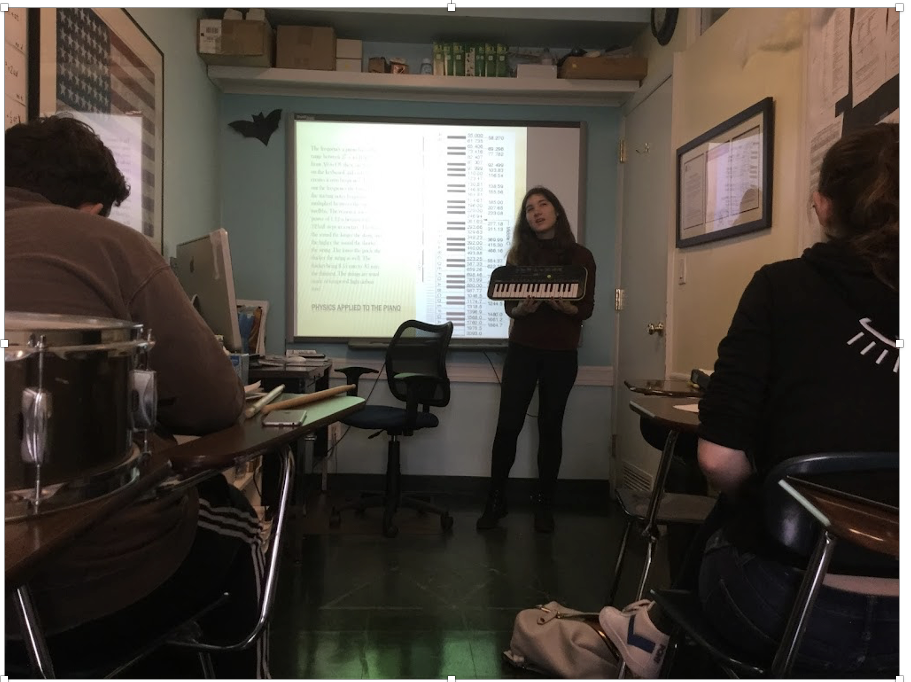
Every year in my Theoretical Physics class, we learn about vibration and waves using the wave equation, which relates the speed of a wave to the product of its wavelength and frequency. We naturally progress into the physics of music, which marries the concepts of ratios and patterns in mathematics, standing waves in strings and air columns, pitch, resonances, and so much more!
During this chapter, the students get a chance to showcase their love for music by completing a project dedicated to their instrument of choice where they get to do background research, learn about the evolution of an instrument, and, most importantly, how the parts of the instruments work harmoniously to produce consonant sounds, and present it to the class. In the past years, I have had students present a myriad of instruments from the common pianos and violins, to glass harmonicas, ukuleles, cellos, and even a didgeridoo! Some students even go above and beyond (for extra credit- of course!) and bring in their instruments for a solo performance as part of their presentation, which for me is the BEST part of it all! Who doesn't love a little jam sesh in the middle of class??

While doing their research and presenting their findings, students are always intrigued (yet grossed out) to hear about how certain animal intestines were used to string musical instruments from the time of ancient Egyptians and Babylonians to the Greeks and Romans. According to Encyclopedia Britannica, “The intestinal tubes (called runners) of sheep are washed, referred to as catgut, cut in ribbons, and scraped free of mucous membrane and circular muscle tissue. The ribbons are placed in an alkaline bath for several hours and then stretched on frames. While still moist they are removed, sorted by size, and twisted into cords of varying thickness. A smoothing and polishing operation completes the process.”
Students also investigate the relationship between math and music as Pythagoras and Ptolemy had done in ancient times. Despite not being able to calculate the frequencies of the vibrating strings, Pythagoras noticed a pleasant relationship between sounds produced by similar strings of equal thickness and tension when the ratio of their lengths were 2:1(octaves), 3:4 (perfect fourths) and 3:2 (perfect fifths). Being both an accomplished mathematician and musician, he aptly quoted, “There is geometry in the humming of the strings, there is music in the spacing of the spheres.”
I’m always thrilled to see the effort and time put into this research and presentation by my students every year. I’m looking forward to seeing which instrument of choice the students in my Theoretical Physics class will serenade me with this year! As Leibniz put it, “Music is the pleasure the human mind experiences from counting without being aware that it is counting.”